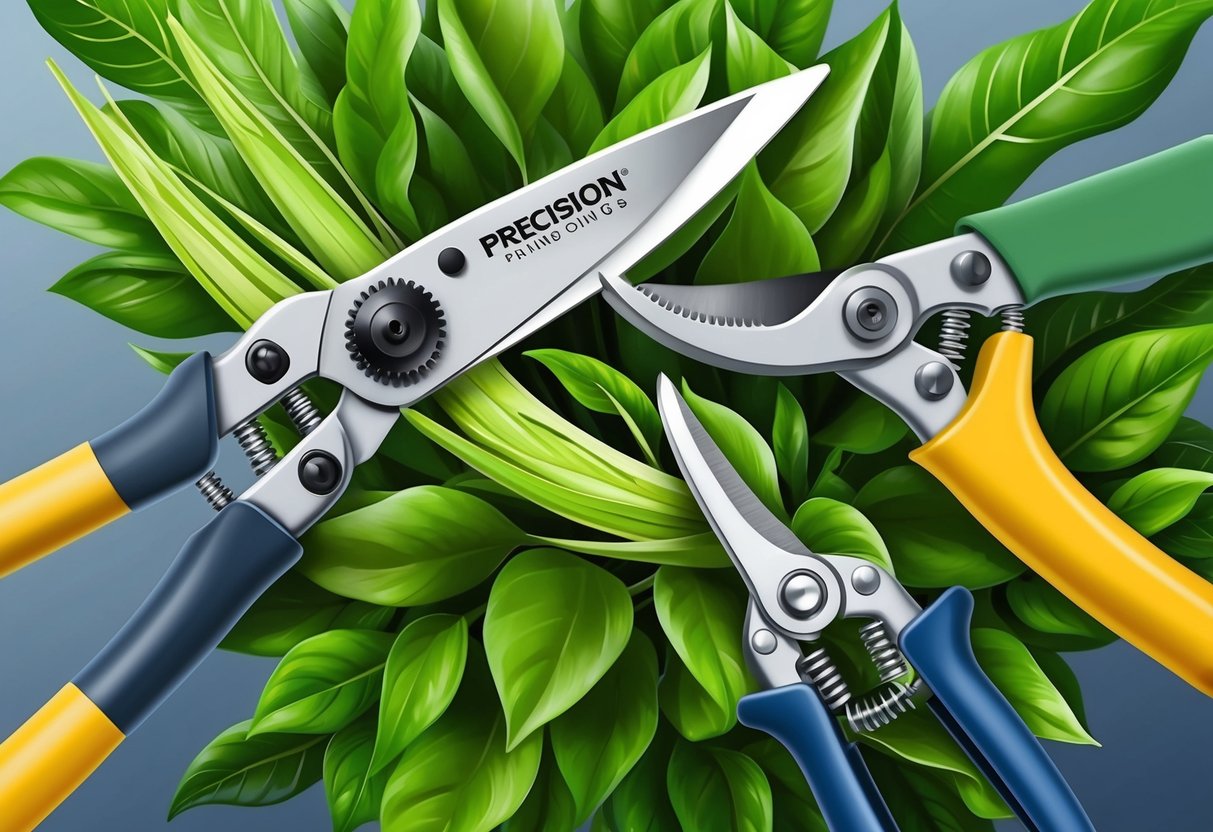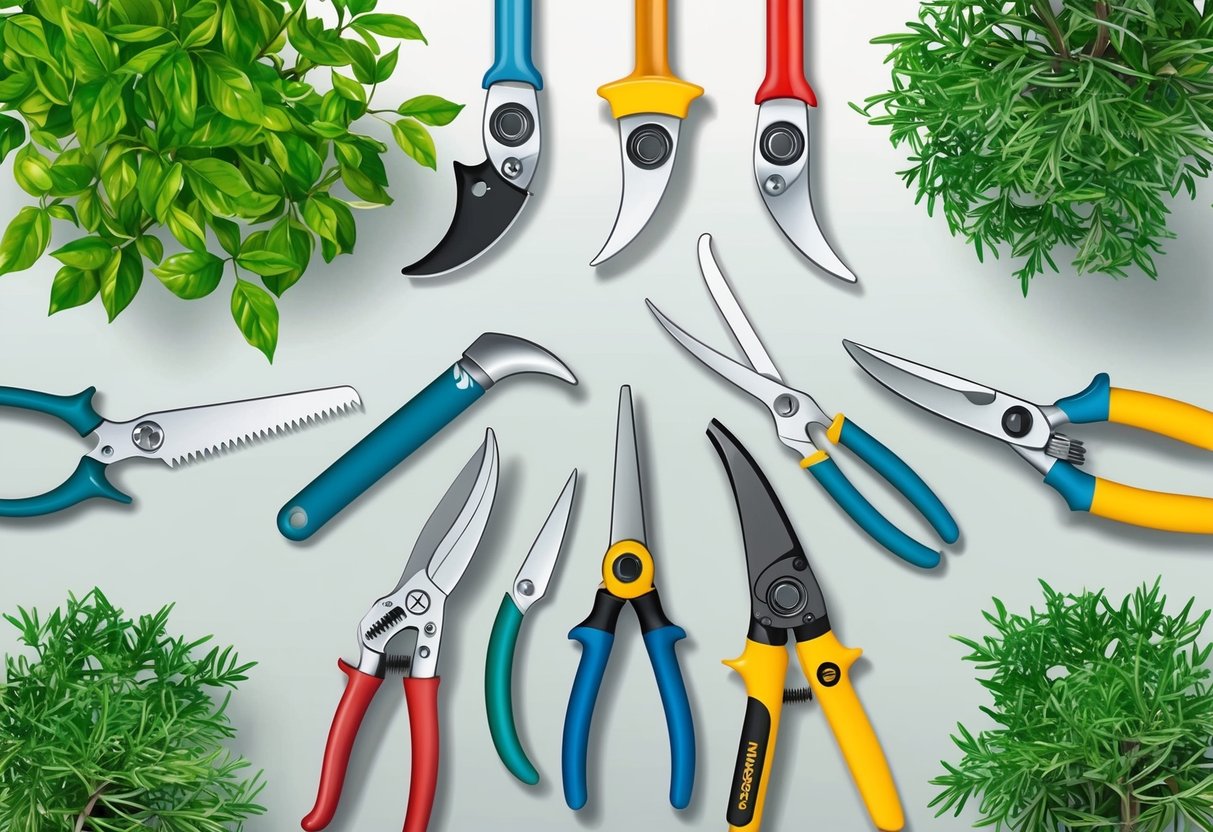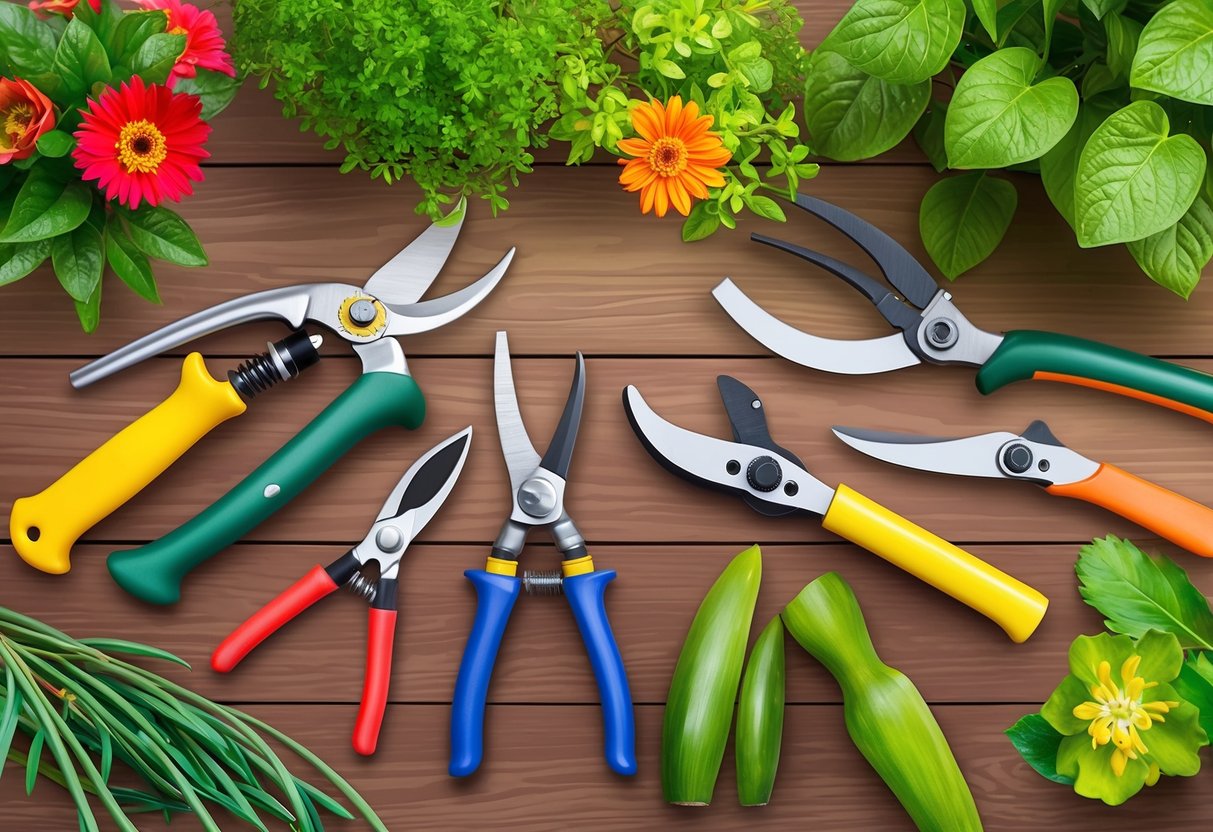
How to Choose the Right Pruning Tool

Precise cuts depend on selecting the right tool for the specific plant. Consider both the user’s comfort and the tool’s overall durability.
The following guidance covers how to match tools to plant types. It also covers how to prioritize ergonomic design and assess construction for long-term service.
Matching Tools to Plant Types
Selecting pruning tools starts with knowing both the task and the type of plant involved. Fine stems and soft green growth are usually best managed with bypass pruners, which offer a clean, close cut without crushing tissue.
For thicker or woody limbs, loppers or pruning saws become essential, as they provide additional leverage and blade strength. Certain specialized tools, such as pole pruners, reach high branches, reducing the need for ladders.
Hand pruners with smaller blades suit indoor plants, herbs, and flower stems. For heavy-duty tasks like shaping fruit trees or cutting dead wood, saws should have robust, sharp teeth to make quick, smooth cuts.
Choosing pruners and loppers based on branch thickness improves plant health and prevents unnecessary strain on both tools and the plant. More detailed guidance is available at this comprehensive pruning tool selection guide.
Evaluating Comfort and Ease of Use
Comfort in use is critical for repeated pruning jobs. Tools should have ergonomically shaped handles to fit the user’s hand, reducing fatigue and risk of injury.
Materials such as rubberized or padded grips offer better traction and cushioning, especially during long pruning sessions. Pruners and loppers with adjustable handle widths can accommodate small or large hands.
Lightweight construction reduces strain, especially for overhead work like tree pruning. Spring-loaded mechanisms, locking blades, and easy-to-use safety latches make frequent tasks safer and smoother.
Key features to prioritize include non-slip grips, balanced weight, and smooth, low-resistance cutting action. Trying several models in person, if possible, helps ensure a good fit for the individual’s comfort and workflow.
Assessing Tool Longevity
Durability is essential as pruning tools can face repeated stress, exposure to sap, and outdoor elements. Look for high-carbon or stainless steel blades, which stay sharp longer and resist rusting.
Forged construction, rather than stamped metal, can mean greater structural strength and longer usable life. Replaceable or sharpenable blade options add long-term value by allowing for maintenance instead of full replacement.
Secure, tight fasteners and solid bumpers help prevent wobble and extend the tool’s lifespan. Regular cleaning, oiling, and correct storage further improve longevity, especially for tools that will see heavy seasonal use.
Reviews and product specifications at detailed buying guides provide further insights on selecting tools known for reliability and durability.
Frequently Asked Questions

Choosing the right pruning tools depends on materials, grip, blade style, and ergonomic design. Differences in tool size and mechanisms can be crucial for gardeners with specific needs or preferences.
What characteristics define the best heavy-duty pruning shears?
The best heavy-duty pruning shears feature hardened steel blades for durability and clean cuts. Sturdy handles made from aluminum or reinforced composites add strength without excessive weight.
A high-quality locking mechanism and shock-absorbing bumpers further improve safety for cutting thick or woody stems.
How do features of pruning shears vary for indoor versus outdoor plants?
Pruning shears designed for indoor plants typically have smaller cutting capacities, shorter blades, and compact handles to maneuver tight spaces. Outdoor pruning tools are larger, with longer handles that provide more leverage and stronger blades for dealing with thick stems and woody branches.
Moisture resistance and rust-proof coatings are more important for outdoor use.
What are the top pruning shears recommended for gardeners with small hands?
Several models cater to small-handed users with slim, lightweight frames and narrow grips. Popular choices include the Felco F6 and Fiskars Softgrip, both offering precise control and comfort.
Smaller size aids accuracy while reducing hand fatigue during extended use.
How can individuals with arthritic hands find suitable pruning tools?
Pruning tools for arthritic hands often include features like ratcheting mechanisms, spring-assisted action, and ergonomic, cushioned handles. Reduced force requirements and soft grips allow those with limited strength or joint pain to prune efficiently.
Tools specifically labeled as arthritis-friendly provide clear options.
Why might someone choose Felco pruners over other brands?
Felco pruners are recognized for their Swiss engineering, long-lasting replaceable parts, and precise, smooth action. Many professionals and home gardeners prefer them for their reliability, comfort, and availability of parts.
The Felco F2 Classic Bypass hand pruner is often ranked as a top choice for all-around pruning tasks.
What are the key differences between bypass and anvil pruning shears?
Bypass pruning shears use a scissor-like action with two sharp blades passing by each other. This results in a cleaner cut suited to live stems and green branches.
Anvil shears have a single straight blade that closes onto a flat edge. They are better for cutting dead wood but are less gentle on living plant tissue.